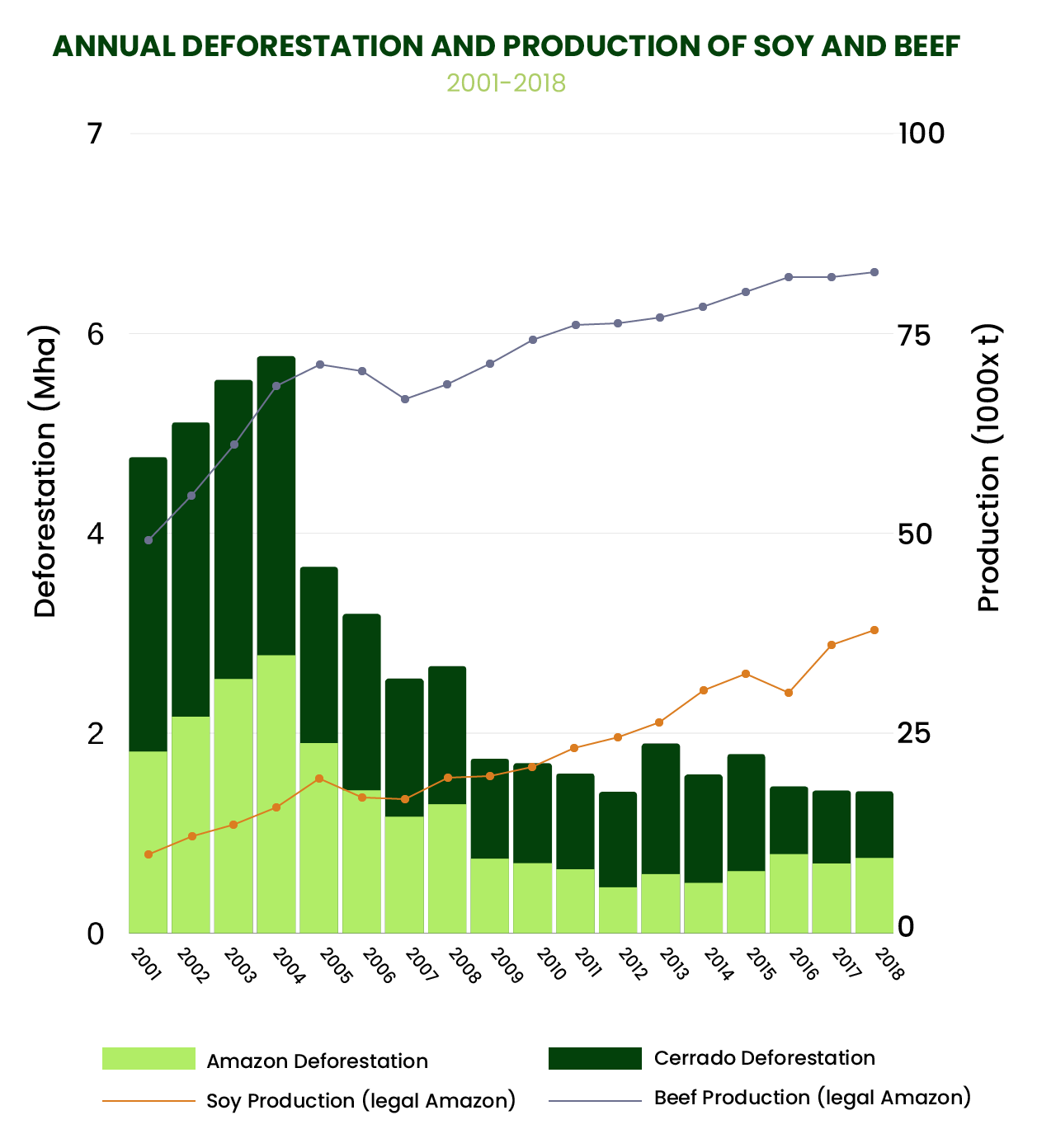
The Amazon Soy Moratorium has been effective in drastically reducing soy-related deforestation in the Amazon. It provides a model which can be adapted to other regions under threat from soy-related destruction of natural vegetation.
Recent studies reveal that the ASM has been effective in drastically reducing soy-related deforestation in the Amazon. A 2015 study indicated that deforestation for soy fell dramatically following the agreement. In the two years preceding the ASM nearly 30% of soy expansion through deforestation rather than by replacement of pasture or other previously cleared land, compared to less than 1% by 2014. The area planted with soy continued to increase over the same time period through conversion of land that had already been cleared.1 Figure 1 shows how deforestation has fallen while soy production has increased in the Brazilian Amazon since 2006. A more recent study (2020) estimated that the ASM was responsible for approximately a quarter of the overall decline in soy-suitable deforestation in the Amazon between 2003-2016, amounting to approximately 1.8 million hectares of avoided deforestation, an area approximately half the size of Belgium.2 This study distinguished the impact of the ASM from the impact of other conservation policies implemented in the same time period as the Moratorium.

The 2020 study concluded that the ASM has not displaced soy-related deforestation into areas of the Cerrado close to the Amazon, or caused a significant increase in non-soy deforestation (for pasture, for example) in the Amazon and nearby portions of the Cerrado. It did not, however, rule out that soy deforestation has been displaced to more distant areas of the Cerrado. The authors also established that non-compliant soy has not been laundered through complaint properties.
The ASM provides an effective model for halting deforestation which can be adapted to other threatened regions. Evidence on property-level compliance shows that farmers are about five times more likely to comply with the ASM than they are with the Brazilian Forest Code, which requires that private landowners in the Amazon keep 80% of their property forested. Simple compliance requirements and streamlined monitoring and enforcement have helped to ensure the high level of compliance.3 Adoption by most traders in the region was also key. The signatories controlled approximately 90% of soy originating from the Brazilian Amazon. They effectively created new market conditions for soy in the region creating strong disincentives for clearing land to plant soy.
Attempts to create a similar voluntary agreement in the Cerrado have so far met with resistance. The 2017 Cerrado Manifesto, asking companies purchasing soy and beef from the Cerrado to eliminate habitat conversion from their supply chains, was followed by a Statement of Support (SOS) from many of the world’s leading food companies, including McDonald’s, Nestle, and Unilever. By 2019, over 135 companies, including investors, supermarkets and fast food chains, had signed the SOS.4 However, some of the largest soy traders in the region oppose the Manifesto, saying that a Moratorium would create tensions with farmers in the Cerrado who are legally permitted to clear 65-80% of native vegetation on their land (in the Amazon, farmers are only permitted to clear 20%).5